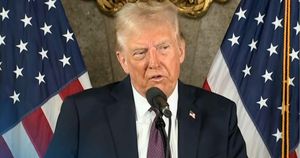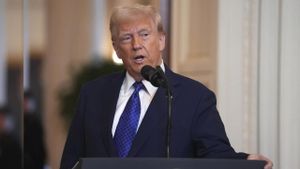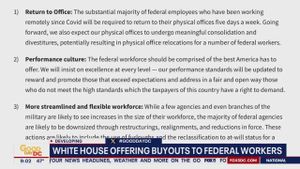The stock market has been brimming with activity recently, particularly following President Donald Trump's implementation of tariffs set to impact major trading partners including Canada, Mexico, and China. These tariffs, which will impose 25% duties on imports from both Canada and Mexico and 10% on Chinese goods, take effect on February 4, stoking concerns among investors eager to understand how these changes will ripple through the economy.
Stocks showed resilience earlier this year, with key indices experiencing significant gains; the S&P 500 climbed 2.7%, and the Dow Jones Industrial Average gained 4.7% just before Trump's tariff announcement. This upward trend, punctuated by investor optimism, has since faced pressure as the market deliberates the ramifications of these new tariffs.
On January 2020, following Trump's announcement on Saturday to impose tariffs, stocks began to react. The Federal Reserve kept interest rates steady on January 29 as officials awaited clarity on inflation and the potential economic impact of these tariffs. There is widespread speculation about how these tariffs might affect consumer prices, with many economists expressing concern over inflationary pressures.
Yahoo Finance's Ben Werschkul noted, "Many economists have argued... tariffs could stoke inflation," highlighting fears of rising costs for American consumers as those tariffs come online. Market observers are also closely monitoring potential retaliatory measures from affected countries, including Canada and Mexico.
Indeed, Canadian Prime Minister Justin Trudeau responded swiftly, declaring, "Canada will place 25% counter-tariffs on CAD $155 billion worth of American-made products," indicating the immediate desire of Canada to protect its economic interests. This retaliation adds to the uncertainties facing the stock market, as investors weigh the risks of all-out trade confrontations.
Sarah Bianci, chief strategist for Evercore ISI, stated, "Trump's tariffs would 'grab the market's attention,'" underscoring the substantial influence these developments could have on investor confidence and stock performance. Market predictions hinge on how the tariffs will shift flows of capital and how swiftly the impacted nations will react with their own measures.
Market analysts are viewing these tariffs as pivotal moments, as tariff discussions have historically sparked significant market narratives. The potential for retaliatory responses is expected to keep tariff-related concerns at the forefront of trading conversations, especially as investors prepare for important upcoming economic reports, including job stats and corporate earnings.
This impending week, investors will parse results from key corporate players such as Amazon, Alphabet, and Chipotle—131 S&P 500 companies are set to release their quarterly results. With the stock market often reacting violently to earnings beats or misses, the stakes are particularly high. Traders remain cautious; less-than-stellar reports amid tariff uncertainties could easily trigger drops.
Despite concerns, it is worth noting how history has framed stock market behavior during prior administrations. Examinations of Trump's first term reveal some volatility but overall strong returns. The S&P 500 posted around 83% cumulative returns from 2017 to 2020, experiencing notable pullbacks largely tied not to presidential policies but external economic events—such as the Federal Reserve's interest rate hikes and the onset of the COVID-19 pandemic, which crashed the market.
Evidence suggests market reactions to ultra-political factors remain complex; it should be remembered, the nature of free markets operates with no single entity wielding total control. Even as some observers might want to assign blame to the President, such interpretations rarely hold up against data showing stock markets respond to broader economic conditions and investor sentiment.
Potential adjustments to the S&P 500's price-to-earnings (P/E) ratios could weigh on valuations post-tariff, with current figures hovering at close to all-time highs. Should the market revert to typical long-term averages, the chance for corrections emerges—potentially heightening the volatility as we move through 2025. Current market valuations can lead to dramatic price swings, and investors remain vigilant, recognizing there potentially lies about a 10% annual chance of significant 20% drops from current price levels.
Overall, the uncertainty surrounding the impact of Trump's tariffs signifies shifting tides on Wall Street. With investors uncertain and the potential for inflation looming heavy, the stock market remains at the mercy of both economic indicators and political decisions. How the market responds will continue to capture national attention as developments occur rapidly. For now, the focus remains sharply on February 4, marking the start of newly instated tariffs and what they could mean for U.S. stocks.



